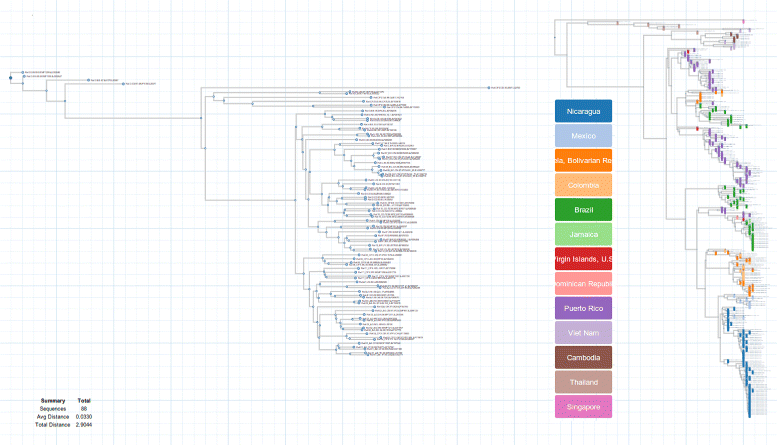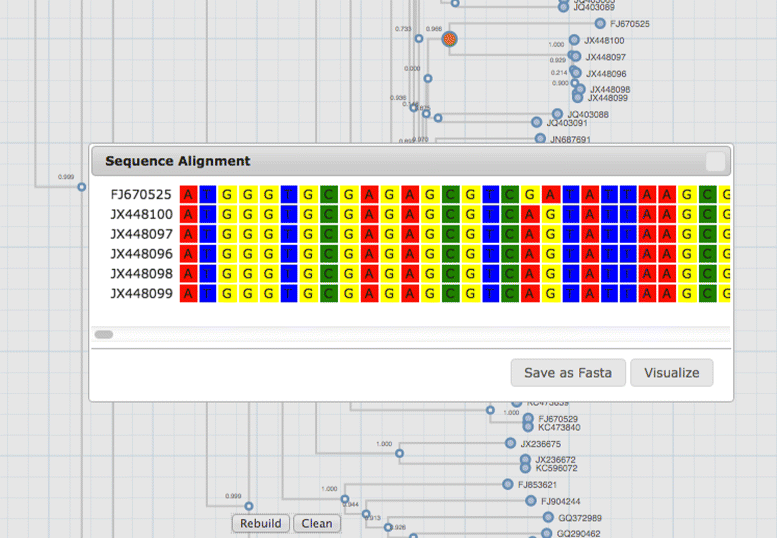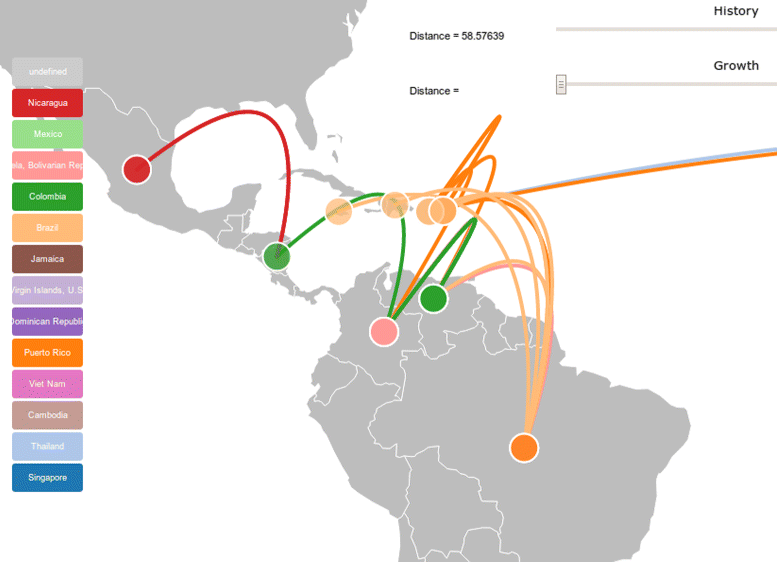Treelink: data integration, clustering and visualization of phylogenetic trees
- PMID: 26714661
- PMCID: PMC4696249
- DOI: 10.1186/s12859-015-0860-1
Treelink: data integration, clustering and visualization of phylogenetic trees
Abstract
Background: Phylogenetic trees are central to a wide range of biological studies. In many of these studies, tree nodes need to be associated with a variety of attributes. For example, in studies concerned with viral relationships, tree nodes are associated with epidemiological information, such as location, age and subtype. Gene trees used in comparative genomics are usually linked with taxonomic information, such as functional annotations and events. A wide variety of tree visualization and annotation tools have been developed in the past, however none of them are intended for an integrative and comparative analysis.
Results: Treelink is a platform-independent software for linking datasets and sequence files to phylogenetic trees. The application allows an automated integration of datasets to trees for operations such as classifying a tree based on a field or showing the distribution of selected data attributes in branches and leafs. Genomic and proteonomic sequences can also be linked to the tree and extracted from internal and external nodes. A novel clustering algorithm to simplify trees and display the most divergent clades was also developed, where validation can be achieved using the data integration and classification function. Integrated geographical information allows ancestral character reconstruction for phylogeographic plotting based on parsimony and likelihood algorithms.
Conclusion: Our software can successfully integrate phylogenetic trees with different data sources, and perform operations to differentiate and visualize those differences within a tree. File support includes the most popular formats such as newick and csv. Exporting visualizations as images, cluster outputs and genomic sequences is supported. Treelink is available as a web and desktop application at http://www.treelinkapp.com .
Figures




References
-
- Page R. Visualizing phylogenetic trees using treeview. Curr Protocol Bioinforma. 2002;6(2):Unit 6.2. - PubMed
MeSH terms
LinkOut - more resources
Full Text Sources
Other Literature Sources
Miscellaneous

